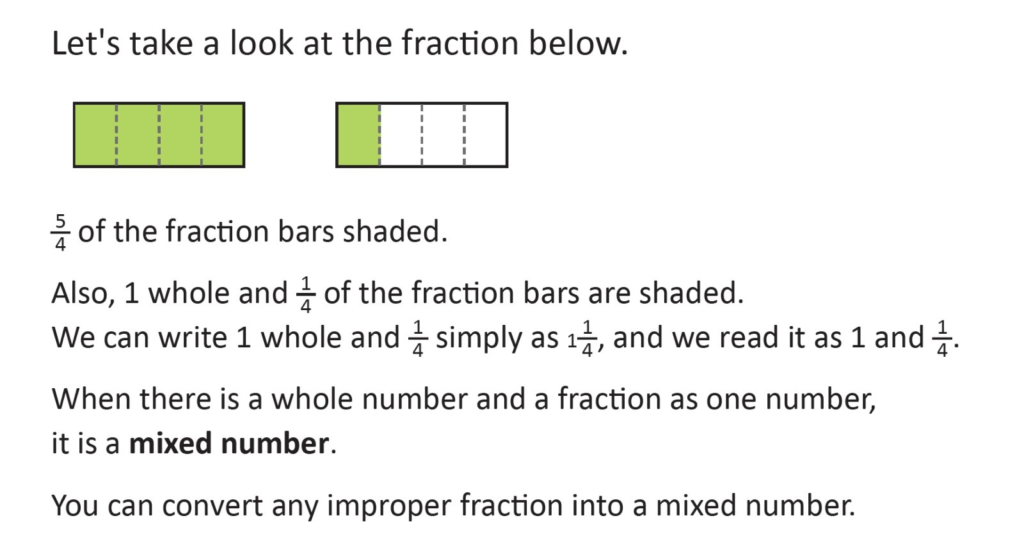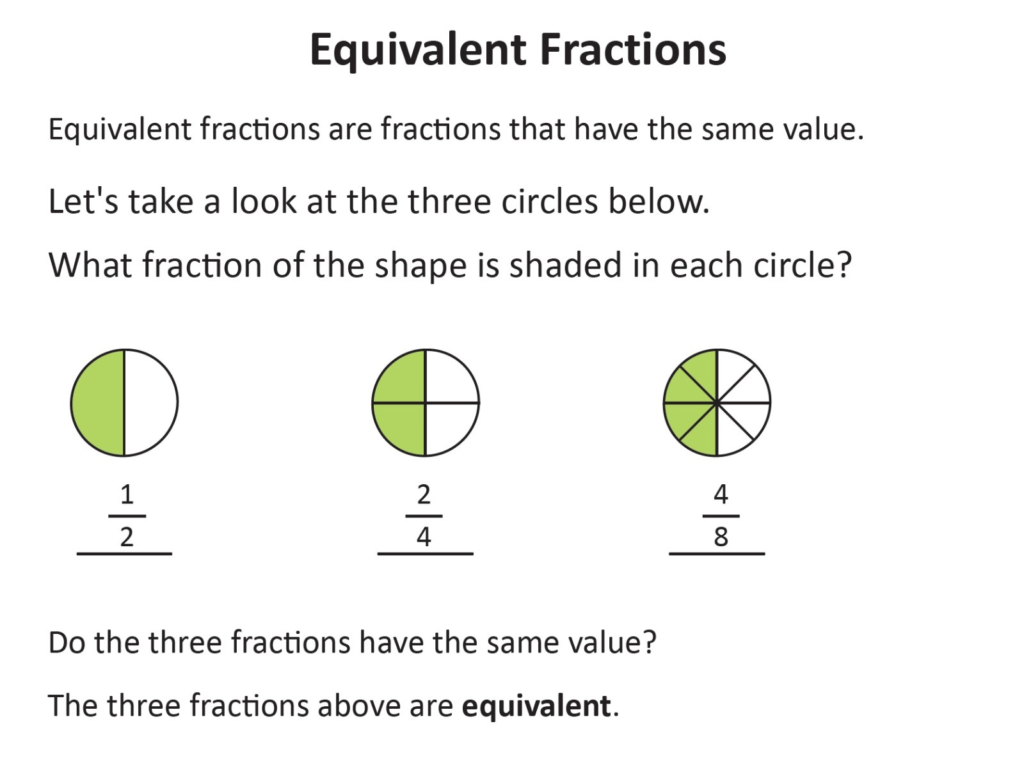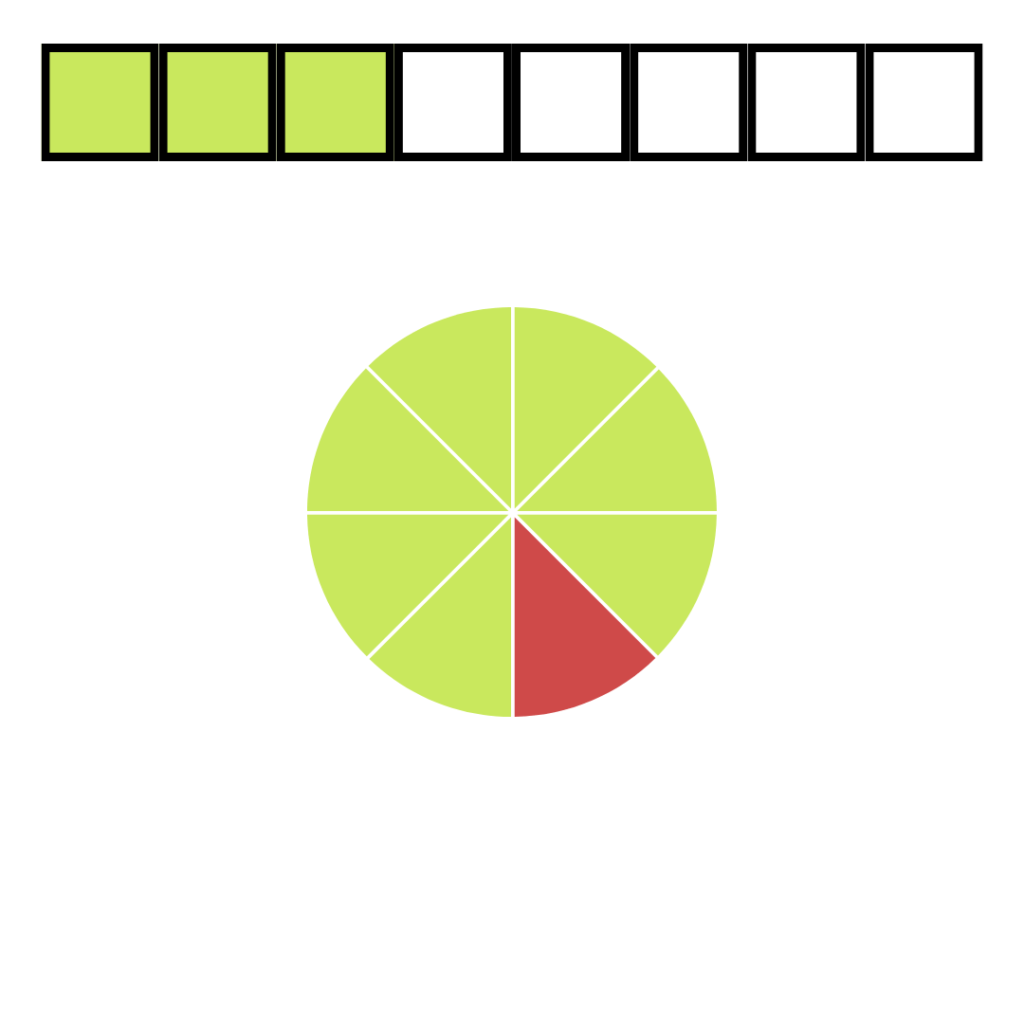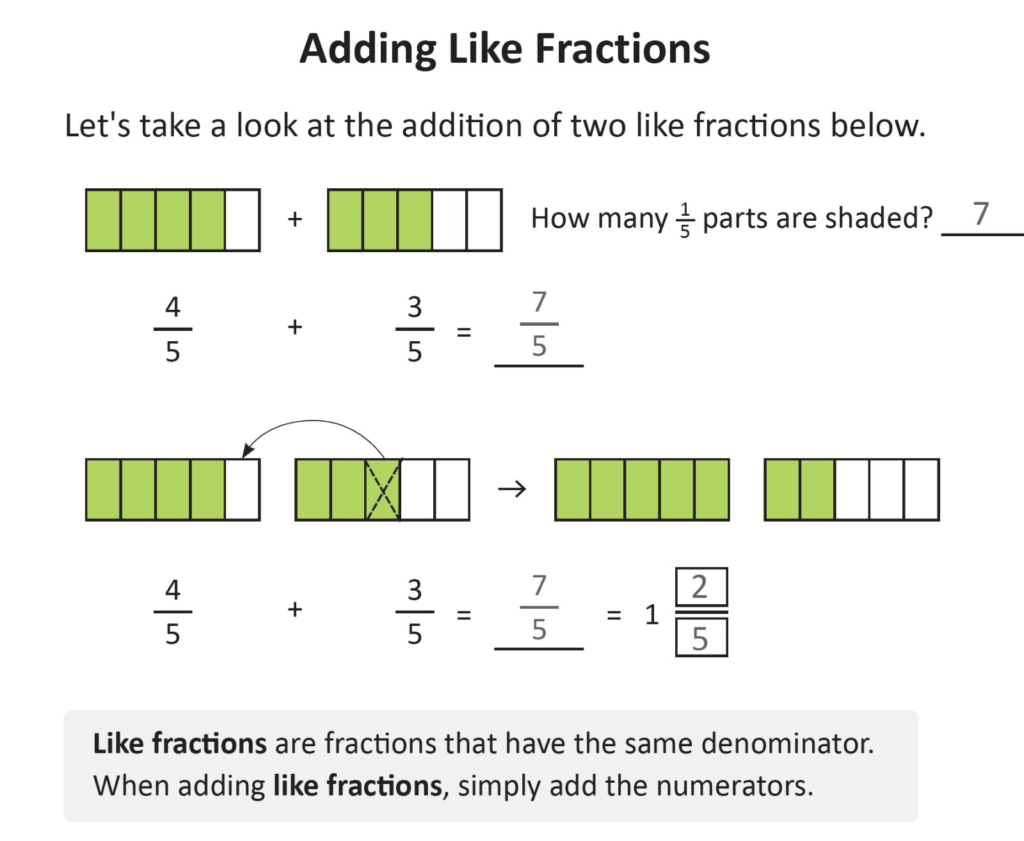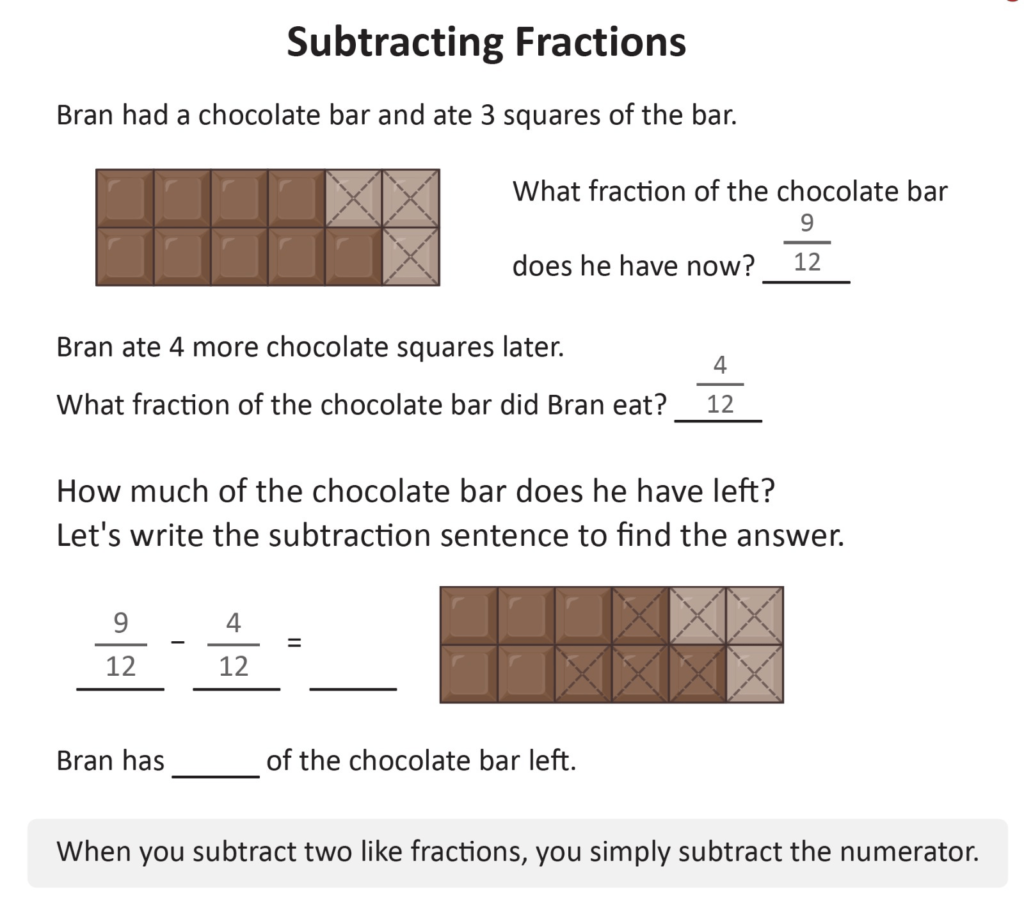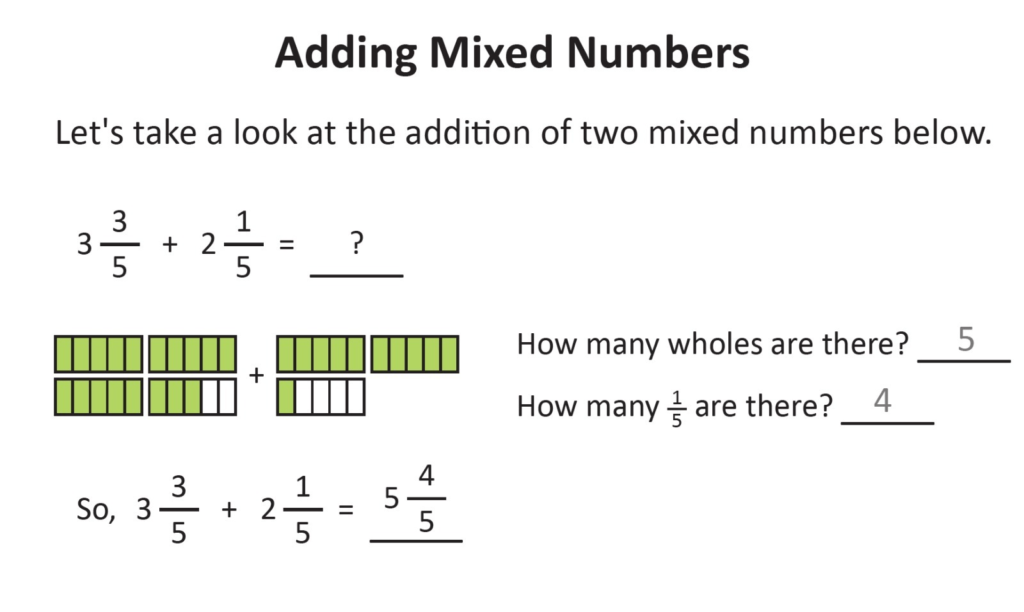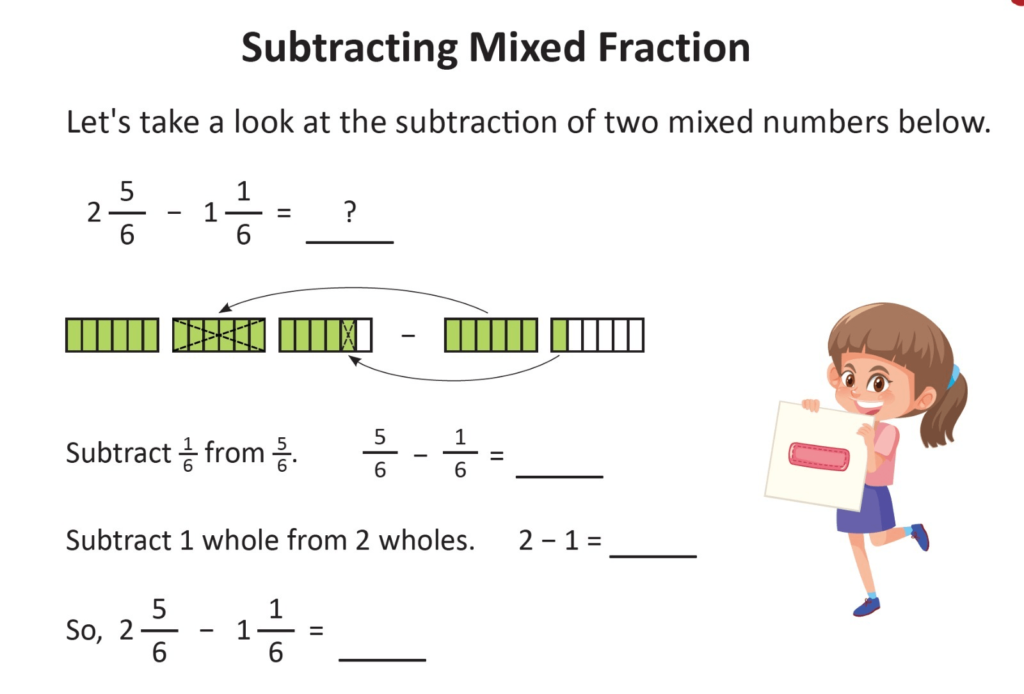A Step-by-Step Guide in Adding and Subtracting Like Fractions for Elementary Students

Fractions are foundational concepts in mathematics, and mastering them is crucial for success in higher-level math. This guide provides a step-by-step approach to learning and understanding elementary fractions, making them less daunting and more enjoyable.
Understanding What Fractions Represent
A fraction refers to a part of a whole. Imagine a pizza cut into 8 slices. If you eat 3 slices, you have consumed 3 out of 8 parts, which can be written as the fraction 3/8.
Parts of a Fraction:
Numerator: The top number (3 in the example) represents the number of parts you have.
Denominator: The bottom number (8 in the example) represents the total number of parts in the whole.
Types of Fractions
Unit Fraction:
The numerator is always 1.
Examples: ¼ , ⅕ , ⅛ …
Proper Fraction
The numerator is smaller than the denominator
Examples: , , , …
Improper Fraction
The numerator is the same or bigger than the denominator.
Examples: , , , …
Mixed Number
When there is a whole number and a fraction as one number, it is a mixed number.
Take a look at the fraction below.
Visualizing Fractions
Using Models:
Fraction Bars: Divide a rectangle or bar into equal parts and shade the parts representing the fraction. For example, for , shade 3 out of 8 equal parts of the bar.
Circles: Divide a circle into equal sectors and shade the sectors representing the fraction.
Adding and Subtracting Like Fractions
Like Fractions:
Like fractions are fractions that have the same denominator. When adding or subtracting like fractions, simply add or subtract the numerators while keeping the denominator unchanged. For example, + = .
Now, let’s take a look at how we can subtract like fractions.
Suppose Bran had a chocolate bar and ate 3 squares of the bar.
Bran has of the chocolate bar left.
Again, when you subtract two like fractions, you simply subtract the numerator and keep the denominator unchanged.
Let’s dig a bit deeper! How do we add or subtract mixed numbers?
Let’s take a look at the addition of two mixed numbers below.
Now, let’s take a look at the subtraction of two mixed numbers below.
Practice Makes Perfect!
- Solve practice problems regularly to solidify your understanding of fractions.
- Use online resources, games, and apps to make learning more engaging.
- Feel free to seek assistance from teachers, tutors, or classmates without hesitation.
By following these steps and consistently practicing, you can master elementary fractions and build a strong foundation for future mathematical learning. Remember, patience, perseverance, and a positive attitude are key!
Need help with elementary Math? Reach out to the PALS Learning Center today!
Previous
Tips for Parents to Help Kids Stay Motivated and Engaged During Winter Break
Next


